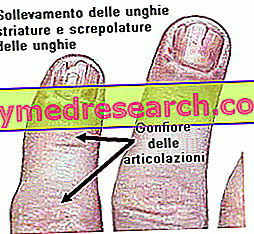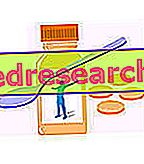What is the Dissociated Diet?
The dissociated diet, described for the first time in the book Food Allergy, published in 1931 by Dr. William Howard Hay, is a diet widely used throughout the international dietary scene.

In particular, the classical dissociated diet and its variants are based on very strict rules, which prohibit the association of certain foods within the same meal or even of the same day.
This concept has been taken up and revisited by other authors, giving rise to a long list of diets based, at least in part, on the theory of "good and bad food combinations".
Rules to follow
Precisely because of this heterogeneity, we will try to classify, in order of importance, the 10 main rules on which dissociated diets are based.
Correctly associating food means:
- In the same meal, eat only one concentrated food or several "compatible" foods (generally belonging to the same category)
- Do not combine protein-rich foods with carbohydrate-based foods within the same meal, especially if they are high in sugar
- Avoid combining protein sources of different nature (such as meat and fish or legumes and dairy products)
- Eat complex carbohydrates and sugars in separate meals
- To desert the classic habit of ending the meal with fruit and / or dessert; better to consume these foods alone and at different times of the day
- The body balance is disturbed by the modern lifestyle, which favors the accumulation of toxins up to compromising the functionality of the whole organism. To defend against the dangers of this dangerous condition, it is necessary to increase the consumption of fruit, vegetables, smoothies and vegetable broths which, together with caloric moderation and correct food associations, favor the detoxification of the organism
- While on the one hand the dissociated diet encourages the intake of plant foods, on the other it warns of the dangers of a diet too rich in animal products (cardiovascular diseases, metabolic diseases and some forms of cancer)
- Carbohydrate consumption must be maximum during the early stages of the day and progressively decrease as you get closer to dinner
- The most abundant meal is served from 1 pm to 4 pm, always taking care not to associate carbohydrates and proteins
- Dinner must be rich in protein foods and almost completely exclude carbohydrates, with the exception of complex ones contained in vegetables or in modest quantities of whole grains
The first seven points are the backbone of dissociated diets more attentive to the health aspect and aimed above all at the prevention of gastrointestinal problems linked to bad eating habits (aerophagia, flatulence, fatigue, loss of postprandial concentration, etc.).
Rules 8, 9, and 10 are instead more common in diets aimed at athletes and people eager to gain in line and physical efficiency (see chronodieta and supercompensation of glycogen).
Physiological bases
The rules proposed by the dissociated diet are not left to chance, but based on more or less solid scientific bases.
The entire digestive process is in fact mediated by a series of chemical, mechanical and enzymatic reactions, which interact with each other.
Let's look at some key points:
- while simple carbohydrates are digested and absorbed very quickly, foods rich in starch, after having been partially digested by salivary amylase (ptyalin), require a more laborious process that is completed in the small intestine. Sweets and sugary fruit should therefore be eaten alone and away from meals, with the exception of apples and pineapple.
- While at the gastric level the digestion of proteins takes advantage of a particularly acidic environment, the same conditions inhibit the activity of ptyalin. Fats, thanks to their retarding effect on the secretion of hydrochloric acid in the stomach, make protein digestion more difficult but favor that of starch, which takes advantage of an environment close to neutrality.
- So go ahead to the marriage of fat and starchy foods, red light instead for the association of proteins with foods rich in carbohydrates. Some supporters of the dissociated diet make it possible to combine high-fat protein foods with small amounts of starch, while the association of proteins and vegetables is always well regarded, which, due to their contribution to salts, promote the enzymatic action and counteract putrefactive processes. .
- Points 8, 9 and 10 are based on the study of circadian rhythms and on the influence of various hormones on body metabolism (for more details, see the chronodiet of Dr. Todisco).
Does the Dissociated Diet Work?
At this point it is right to ask whether the biochemical and physiological rules set forth in this last paragraph are sufficient to decree the success and scientific nature of the dissociated diet.
In principle the answer is negative, since a healthy organism is perfectly able to tolerate the most diverse associations of nutrients, you have the expression: "that person would also digest the stones"?!.
This simple observation does not, however, authorize us to demonize the dissociated diet or mock those who support us. Indeed, some aspects of this food model deserve proper attention.
Praiseworthy are, for example, the advice to increase the amount of plant foods in your diet, to distribute your calorie intake in at least three main meals and not to overdo it with fats and condiments.
More difficult to agree on the role of the correct food associations which, although important and in some cases fundamental for the resolution of the most common digestive problems, risk unnecessarily removing taste, imagination and balance from one's diet.
Many of us, from personal experience, know not to tolerate the association of certain foods but this does not authorize us to think that this rule is valid for everyone.
Focusing on the chemical analysis of the foods in question, we will probably discover that it is not so much the particular macronutrient mix that disturbs us as much as the foods themselves. In some cases it is sufficient to change the origin of the ingredients or the cooking methods to bypass the problem.
In other words, sometimes we blame incorrect food associations when in fact the problem is another one (food intolerances, excessive stress, bad chewing, poor cooking, dietary habits and incorrect lifestyle etc.).
The dissociated diet is not a panacea, but a dietary model with positive and negative aspects, which must be known and addressed with a critical spirit. Those who defend it by mistake are wrong, but even those who contest it err without taking into account some of its elements which, despite the criticisms, are perfectly in line with the latest health acquisitions.
Dissociated Diet - Video
X Problems with video playback? Reload from YouTube Go to Video Page Go to Wellness Destination Watch the video on youtube



